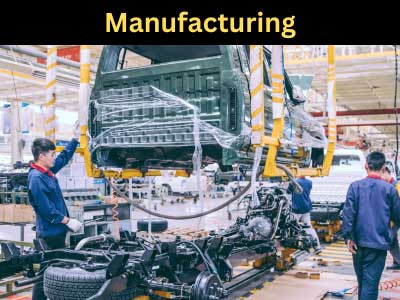Key Takeaway
Zero waste manufacturing aims to eliminate waste in production processes by maximizing reuse and recycling. This approach supports a circular economy where resources are continually reused, reducing the need for new materials. Implementing zero waste manufacturing involves redesigning processes to minimize waste and using sustainable materials.
Key benefits include reduced environmental impact, cost savings from efficient resource use, and improved sustainability. Challenges include the initial investment in new technologies and changing existing workflows. However, the long-term benefits make zero waste manufacturing a vital strategy for achieving sustainability.
Overview of Zero Waste Manufacturing Principles
Zero waste manufacturing focuses on eliminating waste throughout the entire production process, ensuring that as little material as possible ends up in landfills. The core idea is to reduce, reuse, and recycle materials to minimize environmental impact. This approach challenges traditional manufacturing models, where significant waste such as scrap material, excess energy usage, and inefficient processes are common. By adopting zero waste principles, manufacturers aim to not only improve their environmental footprint but also increase their efficiency and reduce costs. From raw material procurement to product delivery, every step of the process is scrutinized for waste minimization, with an emphasis on long-term sustainability. As more businesses align with eco-conscious practices, zero waste manufacturing is becoming an essential approach to meet both consumer demand and regulatory requirements for greener operations.

How to Implement Waste Reduction Strategies in Manufacturing
Implementing waste reduction strategies in manufacturing requires a thorough evaluation of the entire production process. The first step is to identify key areas where waste is generated, including material waste, energy consumption, and production inefficiencies. Once identified, manufacturers can focus on eliminating or repurposing these wastes. One of the most common strategies is adopting a closed-loop system, where waste materials are recycled back into the production process. For example, excess materials like metal or plastic can be melted down and reused, reducing the need for new raw materials.
Another effective approach is improving process efficiency through lean manufacturing techniques, which focus on eliminating waste in both materials and time. Streamlining processes and removing bottlenecks reduces delays and enhances productivity. Employee training also plays a crucial role; workers need to be educated on proper waste management and how their actions can reduce waste. With the right mindset and tools, manufacturers can significantly lower the amount of waste they produce, resulting in both cost savings and environmental benefits.
Role of Lean Manufacturing in Achieving Zero Waste
Lean manufacturing plays a crucial role in achieving zero waste in the manufacturing sector. The lean philosophy emphasizes eliminating waste at every stage of the production process, whether it’s in materials, time, or energy. Lean principles such as value stream mapping, 5S methodology, and continuous improvement help manufacturers identify areas where waste occurs and implement solutions to minimize or eliminate it. One of the key elements of lean manufacturing is to focus only on activities that add value to the final product, while reducing or eliminating tasks that don’t.
By streamlining operations, lean practices improve efficiency, reduce the amount of scrap material, and lower energy consumption. Furthermore, lean manufacturing encourages a culture of continuous improvement, where employees are constantly looking for ways to optimize processes and reduce waste. This not only leads to less environmental impact but also enhances profitability by lowering production costs. When combined with zero waste goals, lean manufacturing serves as an effective tool to improve both sustainability and the bottom line.
Benefits of Zero Waste Manufacturing for Sustainability
Zero waste manufacturing offers several key benefits for sustainability, making it a highly valuable strategy for companies focused on reducing their environmental footprint. First and foremost, zero waste principles significantly reduce the amount of waste that goes into landfills. This not only helps conserve natural resources but also minimizes the environmental damage caused by waste disposal. Additionally, zero waste manufacturing reduces the need for raw materials by repurposing excess or scrap materials within the production cycle.
Another key benefit is the reduction in energy consumption. By optimizing production processes and reducing waste, companies consume less energy, which further lowers their carbon footprint. Sustainable manufacturing practices also tend to improve the overall efficiency of the operation, leading to cost savings in the long run. Beyond environmental benefits, zero waste manufacturing enhances a company’s reputation, as more consumers and investors are seeking businesses that prioritize sustainability. In an increasingly eco-conscious market, adopting zero waste strategies can be a significant competitive advantage.
Technologies Supporting Zero Waste Initiatives in Manufacturing
Technology plays a critical role in supporting zero waste initiatives in manufacturing. Automation, for instance, helps streamline processes by reducing human error and minimizing the amount of waste generated. Automated systems allow manufacturers to measure, track, and analyze production data in real time, which enables rapid adjustments to improve efficiency and reduce waste. In addition to automation, technologies like 3D printing have made significant strides in waste reduction by allowing manufacturers to produce products layer by layer, using only the materials needed for the finished product. This drastically reduces scrap compared to traditional methods like cutting or molding.
Furthermore, advanced recycling technologies enable manufacturers to convert waste materials into reusable resources, thereby closing the loop on production waste. The Internet of Things (IoT) is another technological innovation that supports zero waste by allowing equipment and systems to communicate with each other, optimizing production and identifying potential inefficiencies before they lead to waste. Combined with data analytics, these technologies offer manufacturers powerful tools to achieve zero waste goals while simultaneously improving operational efficiency.
Conclusion
Zero waste manufacturing is more than just an environmental initiative—it’s a business strategy that aligns with both sustainability goals and financial success. By embracing zero waste principles, companies can optimize their processes, reduce costs, and enhance their competitive edge. Technologies like automation and lean manufacturing tools make it easier to implement these practices, allowing companies to cut waste at every stage of production. Ultimately, zero waste manufacturing helps businesses contribute to a cleaner, more sustainable future while boosting operational efficiency and profitability.
